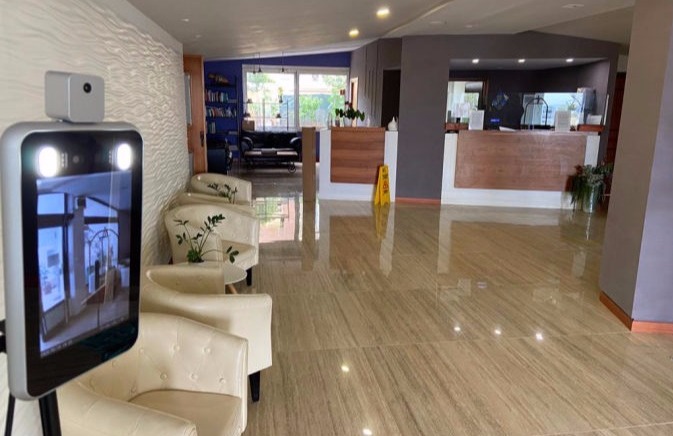The serious effects of a global pandemic are currently visible with the spread of the corona virus COVID-19. In order to contain the pandemic in the long termq, governments have had to apply restrictions in the lives of many citizens around the world. For example, access to public services such as retirement and nursing homes, schools, police stations or hospitals has been banned. Many shops have also been closed for long periods. Some activities are still struggling to resume.
Most COVID-19 patients complain of high body temperature. Fever has proven to be a good indicator for the identification of people suffering from the disease, as well as in the past for other serious infections such as Ebola, dengue fever or avian influenza. The importance of isolating sick people therefore shifts from systematic body temperature monitoring techniques to the use of intelligent thermal imaging cameras, so-called thermoscanners, for fever screening.
In this guide, we will learn all the functions and possible applications of thermoscanners. We'll also learn what you need to consider when purchasing a thermoscanner or thermal imaging camera, especially to have a useful device available even when the emergency, as we all hope, is over.
What are thermoscanners and how do they work?
A thermal imaging camera, an integrated part of an infrared thermoscanner, records light waves just like a conventional digital camera. The special feature of thermal imaging cameras is their ability to record thermal radiation from the surrounding environment. Even small temperature differences are indicated by different colors and high contrast.
Using thermal imaging scanners to control body temperature
The use of this technology, as already mentioned, is a fundamental measure in the fight against infectious diseases.
The professional thermoscanners, installed by Wikifriend, measure body temperature with an accuracy of +/- 0.3°C. Even a body temperature above the minimum threshold of a few tenths of a degree can be detected reliably and safely. The efficiency is remarkable, because a person's temperature can be measured in a few fractions of a second. This makes this preventive measure suitable not only for small access systems, but also for large, busy areas such as airports, railway stations, hospitals and care facilities, as well as petrol stations, public authorities and schools and kindergartens.
To avoid incorrect measurements, our thermoscanners are equipped with an artificial intelligence that distinguishes between objects and faces.
What features should you pay attention to when purchasing a thermoscanner?
The advantages of Wikifriend's thermoscanners:
- Social distancing thanks to non-contact temperature measurement: Thermoscanners reduce the risk of cross-infection, as temperature measurement is carried out without human interaction.
- Highest accuracy: Wikifriend's thermoscanners measure body temperature with a high accuracy of +/- 0.3°C, more accurate than any other camera on the market.
- Maximum efficiency for small and large control areas: Wikifriend's body temperature measurement technology can analyze up to 3 people per second - suitable for both small access systems and large areas with a high density of people.
- Low error rate in fever detection: Using the latest AI technology, the rate of incorrect measurements is minimized. You're on the safe side!
- Cost savings through reduced personnel: Early identification of infected people by the integrated early warning system saves resources. Manual temperature measurement is no longer necessary.
Where are the thermoscanners used for fever monitoring?
The possible applications of thermoscanners are very versatile and flexible. Thermal cameras are used for fever detection, mainly at the entrance to public buildings such as nursing homes, schools, police stations, hospitals and shops. The precise and efficient operation makes these devices indispensable as a preventive measure when reopening work activities.

